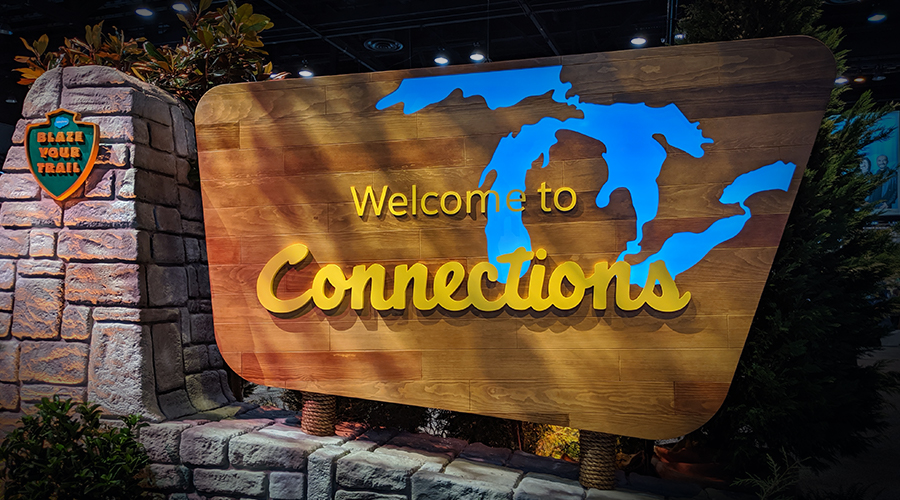So here you are, back at the office after a week away and the team asks, “How was the conference?” After joining 15,000 other attendees at Salesforce Connections and racking up the steps on your latest wearable to attend a few of the 450+ sessions…what do you even say? The first answer that popped in my head when asked was, “It was definitely worth our time.”
While many specific sessions, slides, stats and quotes caught our attention, Salesforce Connections was all about people. As the industry continues to evolve and become more complex, I would challenge you to remember why we do what we do. It’s about people. During the keynote, trailblazers were highlighted who are making great strides for their companies using various cloud offerings. But, more importantly, it matters that these leaders are impacting customers who depend on their companies for great service.
As I return to the day-to-day, my goal is to remember the importance of understanding customers, keeping an eye on my peers and leveraging the strengths of my team and client teams.
Know Your Customers
Consider: Partition your data to improve your time to market
There were tons of sessions about data, personalization and customization. At Simantel, we recommend using data to really know your customers in order to deliver great experiences. But that’s easier said than done, and can be complicated by legacy infrastructure and fragmented data.
In the session How a Leading Automotive Company Drives Results with Personalized Marketing, presented by Toyota of Canada, I heard how the company is using Marketing Cloud to partition usable data to impact their customers. This way, it limits the variables you need to balance at once. Partitioning the data can also lead to quicker time to market and less IT involvement required to support complex integrations. When deciding which data to include in marketing campaigns, Toyota chose to layer it and include data that would create “moments that matter” to their customers. A great example of this was leading with a CTA about Entune (Toyota’s premium audio product plus navigation system). Entune is something that absolutely matters to the customer because it makes their life easier. They followed that with a secondary CTA letting that same customer know their first maintenance appointment would be needed soon.
Partitioning data into Salesforce can make you more agile #CNX19 pic.twitter.com/rGloAgHbmI
— Abby Bell (@TexTrailBlazer) June 17, 2019
Complexity, indeed! #cnx19 #C360 pic.twitter.com/Ckzs3RzfZz
— Abby Bell (@TexTrailBlazer) June 18, 2019
Know Colleagues in Your Industry
Consider: Leverage industry specific sessions at Dreamforce and talk to your peers.
Attending the manufacturing breakfast gave us a chance to talk to other manufacturing, automotive and energy professionals. Many of them are facing similar problems, and it was encouraging to hear how they’re solving those problems today and planning for the future. Each of these companies was at a different stage of how they use Salesforce Cloud, so it was easier to learn from each other about trials and tribulations.
As it should, the conversation always came back to the customer. How do we incorporate personas to make sure we are communicating in the right voice and tone? How do we make sure SMS campaigns are the right channel for reaching customers? What is the right way to bring marketing and operational content together?
To answer some of these questions, Salesforce does a great job of creating breakout sessions, educational content and networking opportunities for industry-specific groups. If you didn’t have a chance to attend one of the sessions tailored to your industry, be sure to look for them at Dreamforce in San Francisco on November 19 – 22.
A good start at this #manufacturing session #CNX19 pic.twitter.com/Yv1rtR0Oji
— Abby Bell (@TexTrailBlazer) June 18, 2019
Know Your Team’s Special Skills and Interests
Consider: Break your projects into three components – data, content/creative and technology.
As hard as we all try, no one person can be an expert in everything. It’s just not possible. Knowing and leveraging the special talents and personalities of your team will help drive change at a reasonable pace.
At Simantel, we often break projects into three components – data, content/creative and technology. Data is the best place to start if you’re asking yourself some of the questions above. When done right, data can give insights into your audience and even tell you how to communicate with them. You may not need a data scientist on your team, but you do need someone who is familiar with your company’s sales model, customer data and goals. Having someone who can crunch numbers in an Excel sheet is great, but what you really want is someone who can look at piles of data and make it actionable. Our content and creative teams then take the data and insights and create 1:1 experiences at scale.
In order to delight customers, it’s important to make them feel special. Finally, our technology teams figure out the best time and channel to deliver that experience and make it work seamlessly. And because of its ability to create cloud pages, email touchpoints, SMS and media campaigns, Salesforce is part of that experience.
If you don’t have a specialist on your team in each of these categories or you have questions on how it all comes together, then an agency partner may be able to fill that gap for you.
Not to toot our own horn, but if you’re looking for a partner like this, look @Simantel. It workwd for Toyota #CNX19 pic.twitter.com/XeT1qpbdm9
— Abby Bell (@TexTrailBlazer) June 17, 2019





